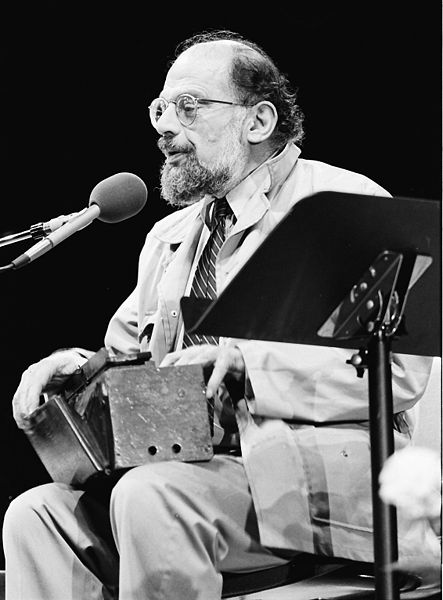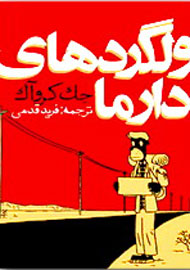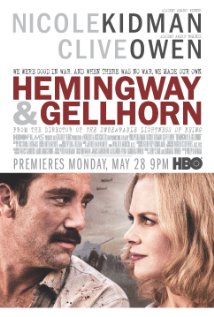In her fascinating article “Won over by the West: The irresistible allure of Americana for post-war Britons” for the November 2013 issue of British GQ, Olivia Cole posits that imported media of post-World War II America attracted the British to the United States—and specifically points to influence of the Beat Generation.
This week I’ll be talking about Cole’s thesis in greater depth, but I think it’s important to kick this off with the relevant background information. My reasoning for this isn’t just that a lot of people may not be familiar with pop culture history but rather that by stressing the history we may actually come to a stronger argument in support of her thesis.
First things first, a mini timeline:
- 1922: Jack Kerouac was born
- 1939-1945: World War II
- 1947-1991: The Cold War
- 1955: Allen Ginsberg’s Howl published
- 1957: Jack Kerouac’s On the Road published
- 1964: The British Invasion
World War II and the Beat Generation
Born in 1922, Jack Kerouac was college-aged during World War II. As Paul Maher Jr., my coauthor for the book Burning Furiously Beautiful, writes:
Jack Kerouac set sail for Greenland on July 18, 1942 aboard the S. S. Dorchester. He had enlisted in the Merchant Marines and, if we take the romantic view of things, was looking for intense experiences that could possibly stimulate him as an emerging writer.
Kerouac served in the Merchant Marines and in the United States Navy and was honorably discharged. England and the US were allies. I specifically wanted to reference Greenland, though, because it reminds me of the famous Beatles quip when a reporter asked the Beatles how they’re enjoying their 1964 tour of the United States:
Reporter: How do you find America?
Ringo Starr: Turn left at Greenland.
I’m getting ahead of myself.
Kerouac’s novel was indeed an overnight success and influenced the culture of the time period. However, many derided the Beat Generation as tearing at American values. In 1958, the derogatory term “beatnik” was coined by journalist Herb Caen. It was an amalgamation of the word “beat” and “Sputnik.” Sputnik was a Russian satellite. Remember: this was during the Cold War, and Russia was not our ally. I’m belaboring this point for a reason:
The United States was invaded—culturally—by its ally. We had a British Invasion—on our music. We did not experience a feared political Russian invasion.
While Beatles record burnings would occur in the years to come, the Beatles—the forerunners of the British Invasion—arrived in the United States, wearing dapper suits and singing about wanting to hold hands. Our allied invaders appeared (though anyone who actually knows their Liverpool and Hamburg start will laugh at this) much more squeaky clean than our own author, Jack Kerouac, who was writing about drugs and s-e-x.
After all the patriotism surrounding World War II and the “beatnik” fad had played out by the sixties, America was primed to look elsewhere—as long as elsewhere was still “safe.”
The British Invasion
The British Invasion occurred less than a decade after Kerouac’s groundbreaking novel On the Road was published, but it was not an immediate reaction to the Beat Generation.
The year 1964 is the year The Beatles landed in America. This set off the British Invasion. The British Invasion refers to British bands such as The Beatles and The Kinks (who were formed in 1964) but also The Rolling Stones (who were formed in 1962) and The Who (who were formed in 1964), not to mention bands who may be less familiar today but still influential such as The Animals, Peter and Gordan, and Herman’s Hermits, who dominated the music scene and wildly impacted the culture of the United States in the mid-60s.
Cole’s article begins with The Kinks’ Ray Davies’ new memoir, mentions the Rolling Stones’ Keith Richards’ memoir, and concludes with Iain Sinclair’s new memoir. A little background information to tie them together: Richards and Sinclair were born in 1943, Davies was born in 1944. Davies and Richards were born in the greater London area, and Sinclair in Wales. In other words, all were born in the UK within a year of each other. While Sinclair is writer and filmmaker and not technically part of the British Invasion, and while Cole herself does not use the phrase, it is central to her themes. Let me state the obvious: These Britons were not peers of Kerouac’s. In fact, they were about twelve or thirteen when On the Road came out.
It’s reasonable to conjecture that it takes a generation for ideas to create momentum and impact culture. Beatnik shtick around the height of the Beat Generation—itself a marketing tool—was gimmick.
The ideas presented by the so-called Beat Generation took hold perhaps in a more powerful way as it basted in young, impressionable minds, who were more willing to see things from a fresh vantage point and implement change. The new generation of creatives could actually impact culture in a much more meaningful way. This is how we see that the bands that rose to prominence during the sixties were more directly impacted by the Beat Generation than perhaps the Beat Generation’s own peers. This is evident in American music of the time as well: Ramblin’ Jack Elliott, born in 1931, was influenced by Kerouac, and Bob Dylan, born in 1941, was encouraged by the Beats.
Now, whether they all truly understood the message behind the different Beat writers works is a different story—as is that hopefully not-too-subtle remark I just made that the writers associated with the Beat Generation can’t all be lumped into one category with one thought. They were individuals and did not always agree with one another’s politics.
The British may have been inspired by the Beat Generation and their work may have resonated with the American audience in the mid-1960s, but Jack Kerouac wanted no credit for the hippie movement that followed. He felt that they distorted his views. If You Walk in Your Sleep…’s “Collective Memory: Kerouac Hated Hippies” speaks to this.
The British are coming! The British are coming! Tune in tomorrow when I talk about the relationship between The Beatles and The Beat Generation.
* * *
Burning Furiously Beautiful: The True Story of Jack Kerouac’s “On the Road” is now available as an ebook and paperback!
Tags: 1940s, 1950s, 1960s, Allen Ginsberg, Beat Generation, Beatles, beatnik, Bob Dylan, British Invasion, Cold War, England, GQ, Herb Caen, Herman's Hermits, Howl, Iain Sinclair, Jack Kerouac, journalism, Keith Richards, Merchant Marine, Olivia Cole, Paul Maher Jr., Peter and Gordan, Ramblin’ Jack Elliott, Ray Davies, Rolling Stones, S.S. Dorchester, Sputnik, The Animals, The Kinks, World War II
 Allen Ginsberg at the Miami Bookfair International on November 7, 1985. Photo by MDCarchives via Wikipedia.
Allen Ginsberg at the Miami Bookfair International on November 7, 1985. Photo by MDCarchives via Wikipedia.






